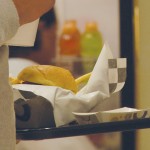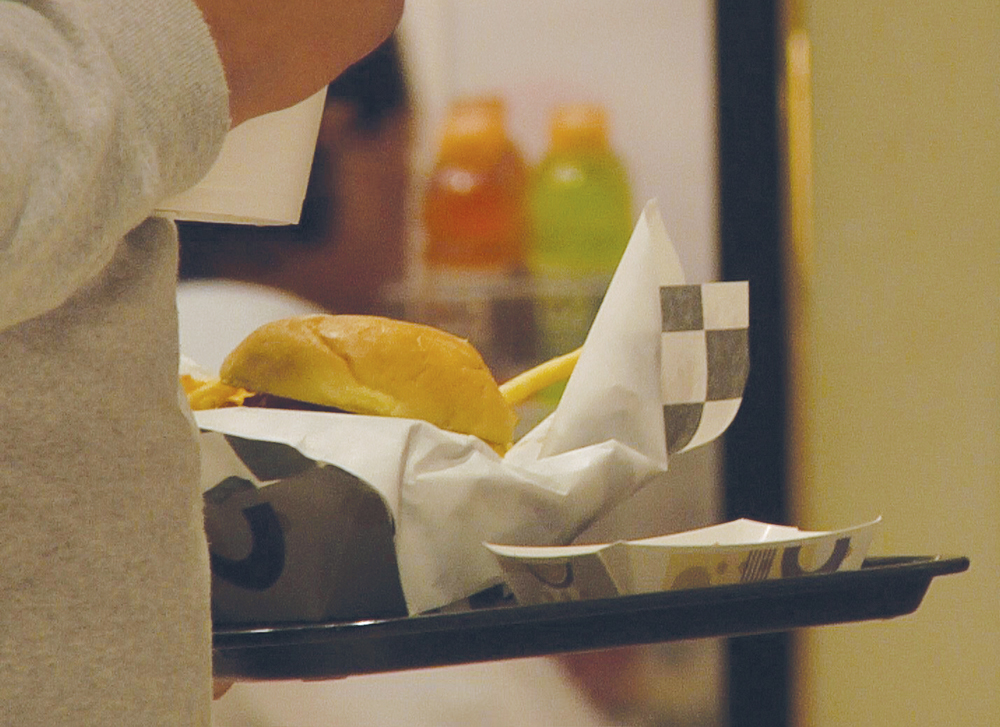By David Hurtado

If Americans stick to their eating and exercise habits, obesity rates in the United States could swell to new heights in the coming decades.
According to data from the Centers for Disease Control (CDC), 35.7 percent of adults are obese and 16.9 percent of children ages 2 through 19 are obese. By 2030, the number of obese adults is expected to rise to 42 percent. In 2011, the obesity rate in Kansas sat at 29.6 percent.
Karen LaMartina, director, Nursing, said she believed this was partly due to the amounts of exercise Americans received. LaMartina also said low-income families are more likely to be at risk for obesity.
“I think what we’ve seen in our nation is just a real increase in caloric intake and a decrease in activity levels,” LaMartina said, “so the pair of those things together has really led to increased obesity.”
The cost of treating additional obese Americans for diabetes, heart disease and other medical conditions is projected to reach nearly $550 billion over the next two decades, according to the CDC.
Body Mass Index (BMI) is a measure of body fat that compares height and weight. A BMI between 18.5 and 24.9 is considered healthy, between 25 and 29.9 overweight and above 30, obese.
In order to combat the surge of obese Americans, some states have taken matters into their own hands. In early September, the New York Board of Health approved Mayor Bloomberg’s proposal to ban sugary drinks above 16 ounces. In 2007, California began enforcing nutritional standards in schools to limit the amount of fat, sugar and calories from vending machine snacks.
LaMartina said she thought efforts like these were a good place to start curbing obesity.
“I know around here in some of our area high schools, they’ve eliminated high sugar beverages as options in the school cafeterias,” she said. “I think they’ve also tried to eliminate some of the real high calorie foods in favor of subways and salad bars. I think those are good efforts.”
At the college, students can choose between five different restaurants in the Food Court to take their meals. Some options include pizza, sushi, tacos and a salad bar.
Nancy Whedon, supervisor, Dining Services, said Dining Services provides gluten-free crackers, veggie burgers, sugar-free pies and grilled chicken sandwiches as healthier alternatives. However, she said it can be a challenge to earn profits from healthy options.
“The problem is when we try to make more healthy and veggie options, they don’t sell,” Whedon said. “Maybe 10 to 20 sell, and/or no one buys them. People are addicted to good tasting fried foods and sweets and breads. It is too ingrained in their minds and stomachs.”
Healthy alternatives provided by the Food Court are not just extended to foods. Students can find drinks besides pop on the menu as well.
“Drinks are one area we have covered,” Whedon said. “We offer juice in a bottle, Life Water, water, Sobe juices and milk. Then, in even our pop machines, we offer Gatorade, Sobe and sugar free cranberry grapefruit juice. […] But if we stopped all the popular foods, and turned the Food Court into a Hidden Valley Ranch commercial, like on TV with only fresh veggies available and healthy food bars and low-fat, sugar-free, no carb, no gluten foods, we could not make it.”
LaMartina said she believes Food Services offers enough variety to allow people make healthy decisions.
“While we have lots of options for foods that are not so healthy, I do think our food service has plenty of choices that are healthy such as the large salad bar.”
Erin Dilley, student, said she keeps in shape by exercising at the college’s fitness center, running, walking her dog and participating in her brother’s indoor soccer games. Dilley also said she has a certain regimen she runs through while exercising at the college.
“First I do the circuit,” Dilley said. “It’s 20 minutes of a different machine that you’re working on. And then I do cardio on a tread mill and then I do about 25-ish minutes of weights. Then I do a cool down and about 20 minutes of ab workout.”
Contact David Hurtado, features editor, at [email protected].






















